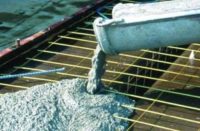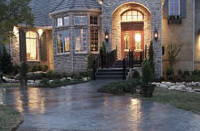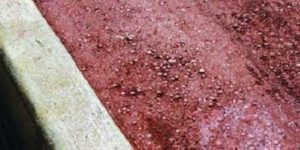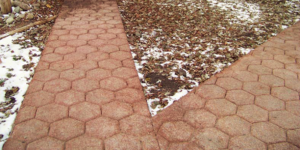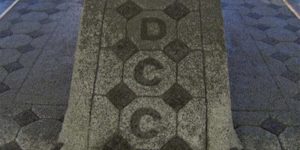 The recently dedicated Cottonwood Creek Park in Encinitas, Calif., is proof that pervious pavement can be as good-looking as it is functional. The half-acre park is a flood control area for a 2,200-acre watershed and had been used as a storage area for sanitation district equipment. The city restored a creek that had been underground in a pipe, and then installed a colored pervious concrete parking lot and a meandering path with environmental education displays along the creek.
The recently dedicated Cottonwood Creek Park in Encinitas, Calif., is proof that pervious pavement can be as good-looking as it is functional. The half-acre park is a flood control area for a 2,200-acre watershed and had been used as a storage area for sanitation district equipment. The city restored a creek that had been underground in a pipe, and then installed a colored pervious concrete parking lot and a meandering path with environmental education displays along the creek.
Chris Klamaske, project manager for contractor T.B. Penick & Sons Inc., located in San Diego, says pervious pavement was selected because “it makes sense in terms of storm water runoff and recharging the water table.” Her firm has done 60,000 square feet of pervious pavement in the past five years. At first, however, she says, “we had to work with our ready-mix supplier to come up with a mixture that worked, and we had to meet with the different architects and city entities to get them to accept it as a viable technology. We call it ‘STF — Save the Fish.’”
 Landscape architect Glenn Schmidt, principal of Schmidt Design Group Inc., also in San Diego, liked pervious pavement environmentally, and proposed integral color to make the concrete look more at home in the park’s natural setting. He explains, “I really like the result of colored pervious pavement from a design standpoint. It has a gravel look that is very textural. And the surface is fairly rough, so it deters skateboarding.” He specified 6-inch thick paving and two shades of Davis Colors, Miami Buff and Adobe.
Landscape architect Glenn Schmidt, principal of Schmidt Design Group Inc., also in San Diego, liked pervious pavement environmentally, and proposed integral color to make the concrete look more at home in the park’s natural setting. He explains, “I really like the result of colored pervious pavement from a design standpoint. It has a gravel look that is very textural. And the surface is fairly rough, so it deters skateboarding.” He specified 6-inch thick paving and two shades of Davis Colors, Miami Buff and Adobe.
Klamaske adds: “Since we specialize in decorative concrete, we put our own twist on the paving to make it a little more decorative.” They ground its surface slightly to expose some of the multicolored coarse aggregate in the concrete, giving the paving “an organic feel that other types of paving don’t have. It’s really beautiful.”
 Others, apparently, agree with his assessment: The project has received awards from the American Society of Concrete Contractors’ Decorative Concrete Council, the American Concrete Institute and the American Public Works Association, and has been featured in Sunset Magazine. More important, according to Schmidt, “The park is now a place to connect with nature, and people come from all over the county to enjoy it.”
Others, apparently, agree with his assessment: The project has received awards from the American Society of Concrete Contractors’ Decorative Concrete Council, the American Concrete Institute and the American Public Works Association, and has been featured in Sunset Magazine. More important, according to Schmidt, “The park is now a place to connect with nature, and people come from all over the county to enjoy it.”
